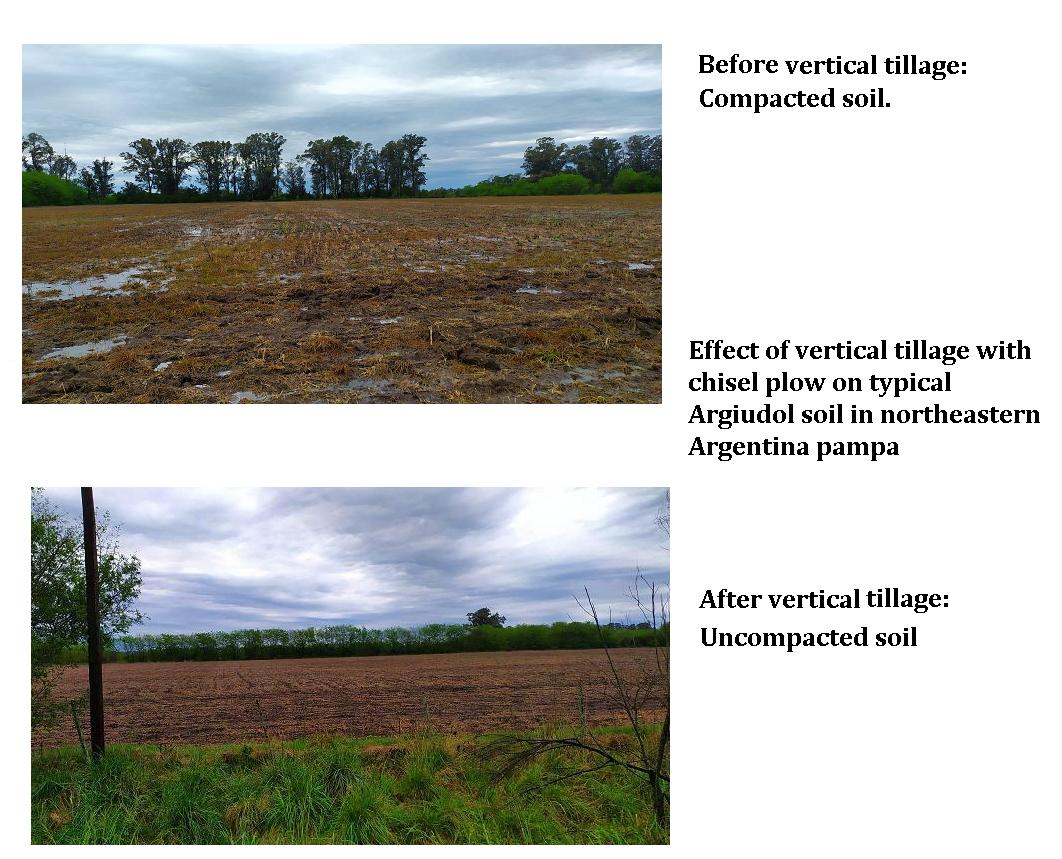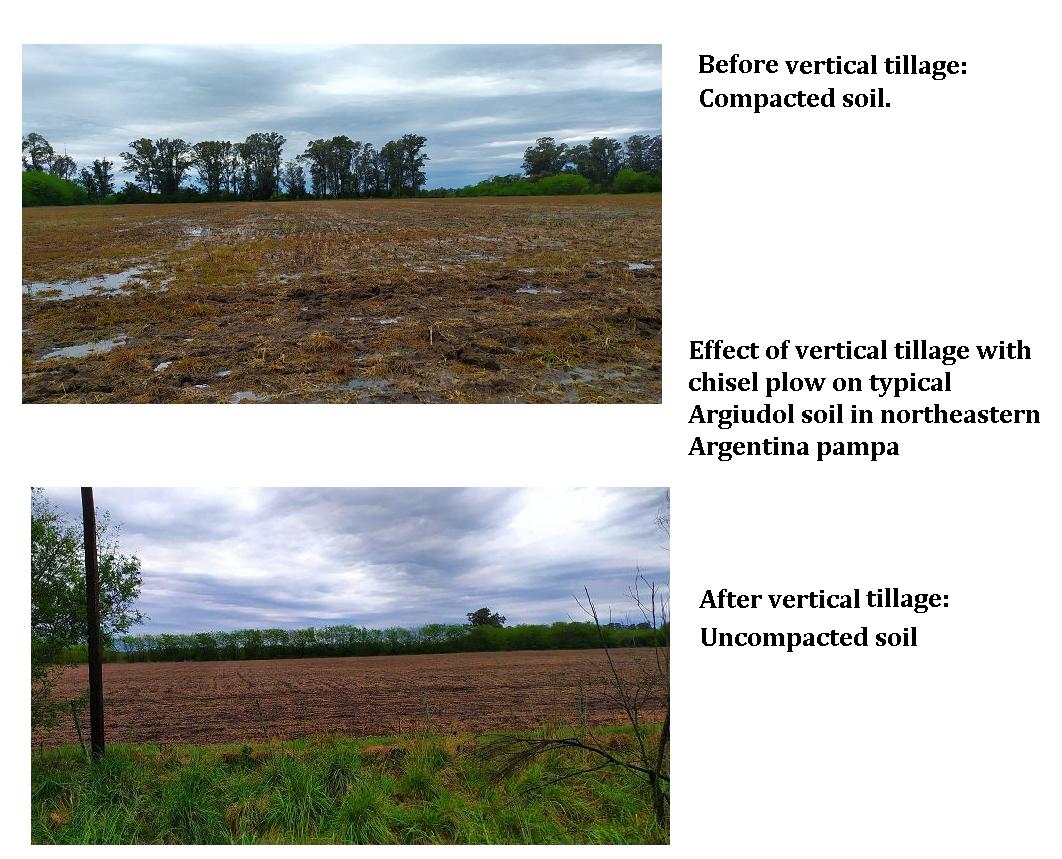Power and draft required by chisel plow on soils worked in no-tillage in the Argentinean flat Pampas
Power and draft required by chisel plow on soils worked in no-tillage
Keywords:
cone index, soil carrying capacity, soil compactionAbstract
The no-tillage systems production in Argentina requires high traffic intensities, for example 50 to 65 Mg km ha. Due to these traffic intensities applied continuously and successively, the soils are compacted. An of the techniques commonly utilized for management of topsoil and subsoil compaction is the chiseling. The objective of this work were: a) to evaluate the effect of vertical tillage on the physical properties of an Typic Argiudol soil from northeastern Rolling Pampa Region at Argentina and b) to quantify the power required by a chisel plow working in one and two depth layers on a soil under no-tillage. Three treatments were applied: T1) control plot (unloosened soil), T2) loosened with one chisel plow pass at 0.25 m deep range, and T3) loosened with two chisel passes, the first at 0.15m and the second at 0.25m. The following variables were measured: cone Index (CI), soil water content, (SWC), tractor slip (TS) and power and draft force (PD). The main results and conlusions showed: a) The CI values on the two deep tillage treatments was statistically different (P < 0.01) from that on the control plot up tu 300 mm and b) the chisel plow working in two depth range (T3) can significantly increase the specific resistance and drawbar power. This means that vertical tillage carried out in two chisel passe (T3) produced, from an energy point of view, less efficiency than (T2).
Highlights
- The chisel plow working in two depth ranges could significantly increase the specific resistance and total drawbar power.
- According to the resuslts obtained, shape, width, rake angle and spacing of an individual soil cutting tool strongly influenced in the implement draft.
- After vertical tillage was applied, soil physical parameters measured on topsoil and subsoil resulted in soil physical conditions that would be suitable for crop development.
Downloads

Downloads
Published
How to Cite
Issue
Section
License
Aquellos autores/as que tengan publicaciones con esta revista, aceptan las Políticas Editoriales.











.jpg)




